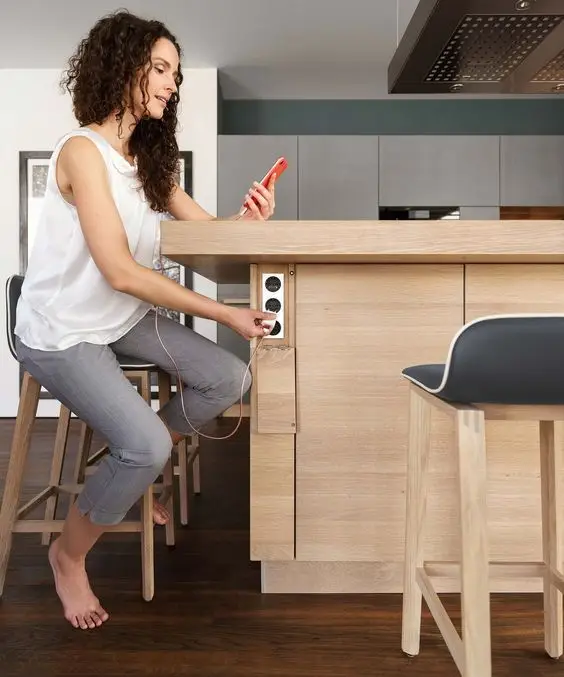

Ever plug something in and just know it’ll work? That’s usually thanks to the NEMA 5-15R outlet. It’s the standard electrical outlet in North America. This guide covers what you need to know about its use.
A NEMA 5-15R outlet is the most common way to get power from the wall to your stuff here. Knowing what it is, how it works, and how to use it safely is important. This knowledge helps ensure compatibility and prevents accidents.
What is a NEMA 5-15R Outlet?
A NEMA 5-15R outlet is a type of electrical receptacle. It is designed to accept plugs with a specific configuration. It provides a safe connection to the power grid. Think of it as the universal adapter for North American electricity.
NEMA Standards Explained
NEMA, or the National Electrical Manufacturers Association, sets the standards for electrical equipment. This includes receptacles and plugs. They make sure everything works safely together. They define shapes and sizes for different uses. For example, a NEMA 5-15R is for common household use.
Other NEMA types exist. A 5-20R, is similar but handles more power. NEMA standards ensure that plugs fit the correct outlets, keeping things safe.
Decoding the 5-15R Designation
The “5-15R” name tells you key specs. The “5” means it’s a 125-volt outlet. “15” indicates it handles up to 15 amps of current. The “R” stands for “receptacle,” meaning it’s the outlet itself.
The NEMA 5-15R also has a crucial grounding feature. This grounding connects to a third prong on the plug. Grounding prevents electrical shocks. Safety is essential in electrical design.
Key Specifications and Electrical Ratings


Knowing the electrical ratings is important. It prevents overloads and keeps you safe. Voltage, amperage, and wattage are crucial. Certifications add extra assurance.
Voltage and Amperage
A NEMA 5-15R outlet supplies 125 volts. It can handle a maximum of 15 amps. Voltage is like water pressure, and amperage is like the amount of water flowing. They work together to power your devices.
Maximum Wattage and Load Considerations
Wattage measures the total power used. You find it by multiplying voltage by amperage (P=VI). For a 5-15R, that’s 125 volts x 15 amps = 1875 watts.
Don’t exceed this limit. Overloading can overheat wires. This can cause fires. Before plugging things in, add up their wattage. Most appliances list wattage on a sticker.
Safety Certifications (UL, CSA)
Look for UL (Underwriters Laboratories) and CSA (Canadian Standards Association) certifications. These marks mean the outlet meets safety standards. UL and CSA test products. This makes sure they’re safe to use. Using certified outlets protects you and your home.
Common Applications of the NEMA 5-15R
This outlet powers many things you use daily. From lamps to computers, it’s everywhere. Understanding common uses helps you manage power safely.
Household Electronics and Appliances

NEMA 5-15R outlets power lamps, computers, and TVs. Phone chargers and small kitchen gadgets use them. Power strips and surge protectors also rely on 5-15P plugs. They let you plug in more devices at once.
Office Equipment
Offices also use 5-15R outlets a lot. Computers, monitors, and printers all need them. Office power use can add up. Be aware of overloading circuits.
Extension Cords and Power Strips
Extension cords and power strips give you flexibility. They use NEMA 5-15P plugs and 5-15R receptacles. Using the right extension cord is important. Heavier-duty cords handle more power safely.
Installation and Safety Best Practices
Safe installation is essential. Proper wiring and grounding prevent hazards. Follow these tips to stay safe.
Proper Wiring and Grounding
A NEMA 5-15R outlet has three wires: hot, neutral, and ground. Hot carries the electricity. Neutral completes the circuit. Ground provides a safe path in case of a fault.
Proper grounding is very important. It protects against electrical shock. Always consult a qualified electrician. Electrical work can be dangerous.
Avoiding Overloading and Circuit Breakers
Overloading a circuit is risky. It can trip a circuit breaker or start a fire. Know your circuit limits.
To avoid overloads, don’t plug too many high-wattage devices into one circuit. Use a circuit breaker finder. This helps you see which outlets share a circuit.
Regular Inspection and Maintenance


Check your outlets regularly. Look for damage or wear. Replace any that are loose or cracked. Safe outlets protect your home.
Troubleshooting Common Issues
Sometimes outlets don’t work. Here are some common problems and fixes. These tips can help you diagnose and solve issues.
Outlet Not Working
First, check the circuit breaker. It may have tripped. Test the outlet with another device. Use a multimeter to check for voltage. If there’s no voltage, the problem is in the wiring.
Loose or Damaged Outlet
Loose outlets are dangerous. They can cause shocks or fires. Turn off the power first. Then, replace the outlet. If you’re not comfortable, call an electrician.
Conclusion
The NEMA 5-15R outlet is everywhere in North America. Understanding its specs and safe use is crucial. Always prioritize safety.
Knowing how to use it keeps you safe. It helps you get the most from your electrical devices. The NEMA 5-15R remains a key part of our electrical system.
- 2shares
- Facebook0
- Pinterest2
- Twitter0


